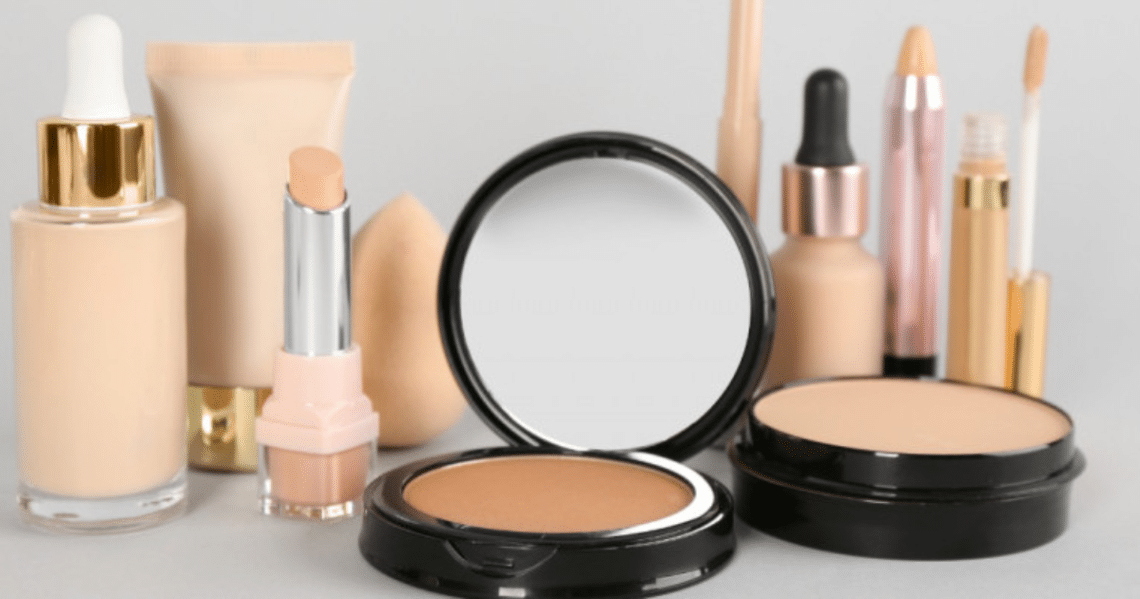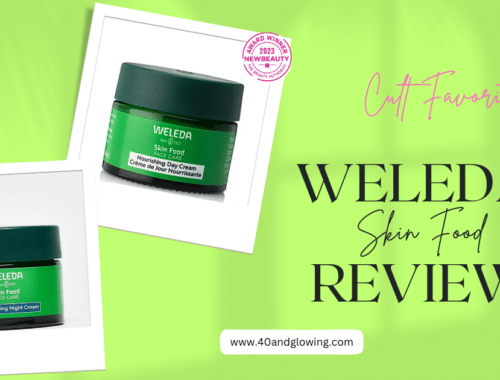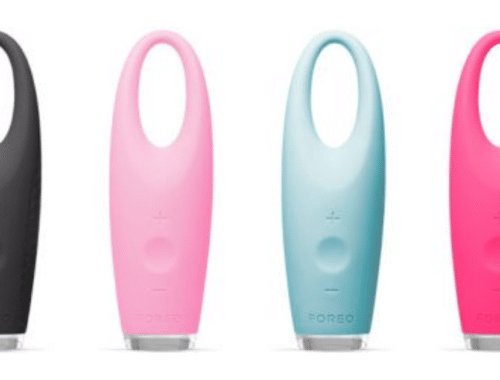
How to Choose Foundation for Mature Skin
There are few things in life, that bring the same excitement and joy as a perfect pair of jeans…except finding the perfect foundation for mature skin. Finding a foundation that’s the right color, amount of coverage, and doesn’t leave you with cake face, can be extremely challenging but if you’re still using the same “old faithful” foundation you have for years, then it may no longer be working for you like it used to. This is because not all foundations were formulated for maturing skin and the issues that come with it.
Foundations for mature skin has a list of concerns that it must target including fine lines, wrinkles and dark spots that have found an unwelcome home on skin. In this article, we’ll take a look at:
- The best type of foundations for mature skin
- Types of foundations to stay away from
- Application tips
What is the best type of foundations for mature skin?
As we start to get older, our skin begins to go through many changes from producing less collagen and elastin, which keeps skin plump and able to bounce back to reduced sebum amounts resulting in a drier, thinner, duller complexion.
Many women believe they need a thicker foundation to compensate for these changes to skin however, a full coverage foundation can look caked, cracked, and settle in fine lines and wrinkles.
Thinner and lighter foundations are a better choice because they help skin appear to be younger and brighter.
The 5 Factors to Consider When Choosing a Foundation for Dry Mature Skin
- Benefits
- Skin Type
- Coverage
- Finish
- Formulations
1. There are several benefits that you can choose from with added active ingredients in foundations.
Two important concerns for women with mature skin to consider is dry skin and choosing a foundation with hydration, and dark spots and a foundation that’s pigmented and has sufficient coverage.
Formulas with antioxidants are also a good choice due to their ability to stimulate collagen production, reduce fine lines and wrinkles and lighten discoloration.
Other active ingredients to look for to add benefits is hyaluronic acid, vitamin b, vitamin c, vitamin e and aloe vera.
2. You should also consider what skin type you have in order to choose the best fit.
Dry Skin many women with mature skin have dryer skin in which they can benefit from foundations with added hydration. Ingredients to look for include hyaluronic acid, squalane, shea butter, niacinamide, aloe vera, and glycerin.
Oily/Combo Skin can be a bit tricky to find a foundation for when skin is maturing. Most mature skin is dryer because less sebum is produced however the T zone can still be prone to excess oil. Normally a medium to full coverage foundation is recommended however full coverage foundations can settle in fine lines and wrinkles. Therefor a medium coverage foundation is a better choice for women with mature skin. Added ingredients to look for to minimize excess oil production is zinc oxide, serecite, and salicylic acid.
Sensitive Skin is highly reactive and should avoid heavy and fragranced foundations. Sheer to medium coverage is normally recommended as long as it’s non-comedogenic (won’t clog pores). Added ingredients that benefit sensitive skin are soothing ingredients such as niacinamide, squalane, Chamille extract and aloe vera.
3. Choosing the right coverage.
Coverage that is thick and heavy may seem like the right choice for mature skin and covering up concerns but it can have the opposite effect making fine lines and wrinkles more visible. Lighter and thinner foundations are a better choice because they don’t settle in fine lines and wrinkles as easily. If you must go with a more full coverage foundation than a medium coverage foundation is recommended that does not have a matte finish.
4. The best finish to choose is a lightweight, water-based foundation.
Natural/Sheer is lightweight and natural looking that enhances skin without masking it.
Dewy/Luminous is lightweight with a healthy glowing finish and a good choice for mature skin.
Radiant finishes are similar to dewy/luminous but with more shimmer. Radiant finishes can have too much shine for mature skin.
Matte finishes are full coverage that is dull and does not reflect light. Matte finishes are best for oily skin and is not recommended for mature skin.
5. Foundations come in several formulations so there’s a perfect fit for everyone.
Below is a short breakdown of the different formulations available and the skin type each is best for.
Liquid Foundations
Liquid Foundations are a creamy liquid that can be oil based, silicone based, mineral based, or water based. Liquid foundations are for all skin types but the key to finding the perfect fit is choosing one with the right ingredients. Water based or oil free foundations are a good fit for most women with mature skin however, if your skin is extremely dry you may prefer the extra hydration from an oil based or silicone foundation. Mineral foundations are a good choice for sensitive skin.
Air Brush Foundations
Air Brush Foundations come in a thin liquid that’s designed to be applied with an air brush gun. Air brush foundations may come in an alcohol based, water based, and silicone based formula. Air brush foundations are a good choice for mature skin but I would not recommend one that is alcohol based due to its drying factor. Alcohol based may also be to harsh for sensitive skin.
Mousse Foundations
Mousse Foundations are a light and airy hybrid mixture of a liquid and cream foundation. Mousse foundations are a good fit for most skin types leaving you with a flawless and slightly brightened complexion.
Cream Foundations
Cream Foundations have a thick creamy texture with a dewy finish. Cream foundations are a good choice for those with dry skin who like more of a full coverage.
Stick Foundations
Stick Foundations have a thick solid cream texture with lots of pigment. Stick foundations are best for those with oily or combo skin.
Loose Mineral Foundations
Loose Mineral Foundations are a finely milled loose powder that consists of all mineral ingredients and has no preservatives or fragrances. Loose mineral foundations are a good choice for sensitive skin but not recommended for those with extremely dry skin.
Pressed Powder/Pancake Foundations
Pressed Powder/Pancake Foundations consist of a solid dry powder that is used dry or activated by adding water. Pressed powder and pancake foundations are best for those with oily complexions. They are not a good choice for dry, mature skin.
Tinted Moisturizers
Tinted Moisturizers are a creamy foundation with a hint of color and lots of moisture. Tinted moisturizers are a good choice for most skin types including dry and mature skin.
Application Tips for Cake Free Foundation
Now you know how to choose the perfect foundation but in order to get the best results there are a few simple steps that will help ensure it goes on smooth without settling into fine lines and wrinkles or caking.
You want to start with a clean smooth surface because foundation will not go on smooth if your skin is dry and flaky.
- Before you begin applying the perfect foundation on your skin it’s important to properly prep your skin and start with a hydrating, non-greasy moisturizer.
- Use a good primer. A good blurring primer can help hide and smooth unwanted skin texture, so your concealer and foundation doesn’t have to do all the work.
- If your skin is extremely dry you can use a quality oil on dry spots or even mix a little in with your foundation.
- Use foudation sparingly. Start in the middle of your face and work your way out or only put foundation on the areas of concern. Avoid putting heavy foundations on areas with lots of crows feet and expression lines.
- Apply foundation with your fingers because the warmth of them helps foundation melt into skin seemlessly. Then use a beauty blender to dab and build coverage where needed.
- If more coverage is needed in certain areas such as under the eyes then use a thin light reflecting concealer.
- Only apply a light layer of powder. Powder will stick to dry patches and settle in fine lines and wrinkles making them more visable.
- Finish your look off with a couple sprays of setting spray.
Conclusion
Now you know one of the most important steps to your make up and foundation is prepping. Foundation is the base of your make-up and if you don’t get it right then your whole look will be off. Use the simple tips listed above and your foundation will look flawless.
Click on this link to see if your foundation made the list of The 10 Best Foundations for Mature Skin.

Is CBD Oil Good For Your Skin?
You May Also Like

The Best Moisturizers For Mature Skin
24 September 2023
Say Goodbye to Fine Lines: A Review of Weleda Skin Food for Anti-Aging
2 October 2023



One Comment
Pingback: